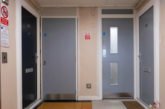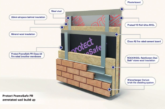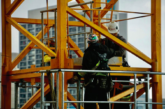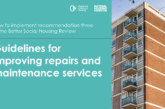The Home Office is introducing a new bill to improve fire safety in buildings in England and Wales.
The proposed Fire Safety Bill builds on action already taken to ensure that people feel safe in their homes, and a tragedy like the Grenfell Tower fire never happens again.
The bill will amend the Fire Safety Order 2005 to clarify that the responsible person or duty-holder for multi-occupied, residential buildings must manage and reduce the risk of fire for:
- The structure and external walls of the building, including cladding, balconies and windows
- Entrance doors to individual flats that open into common parts
This clarification will empower fire and rescue services to take enforcement action and hold building owners to account if they are not compliant.
Minister for Security James Brokenshire said: “We remain committed to implementing the recommendations made following phase one of the Grenfell Tower Inquiry, and the Government has already made major reforms to building safety. The bill will help bring about meaningful change to improving building safety.”
Chair of the National Fire Chiefs Council Roy Wilsher commented: “I am pleased to see the announcement of the new Fire Safety Bill. We have been calling for additional powers since 2017 and these changes should contribute to the public feeling safer in their homes.
“We look forward to seeing additional supportive measures to assist fire and rescue services, identify different types of cladding and take appropriate measures.”
The bill will provide a foundation for secondary legislation to take forward recommendations from the Grenfell Tower Inquiry phase one report, which stated that building owners and managers of high-rise and multi-occupied residential buildings should be responsible for a number of areas including:
- Regular inspections of lifts and the reporting of results to the local fire and rescue services
- Ensuring evacuation plans are reviewed and regularly updated and personal evacuation plans are in place for residents whose ability to evacuate may be compromised
- Ensuring fire safety instructions are provided to residents in a form that they can reasonably be expected to understand
- Ensuring individual flat entrance doors, where the external walls of the building have unsafe cladding, comply with current standards
Actions to improve building safety
The bill will also give the Secretary of State for Housing, Communities and Local Government the powers to amend the list of qualifying premises that fall within the scope of the Fire Safety Order by way of secondary legislation, enabling the Government to respond quickly to developments in the design and construction of buildings.
Alongside the bill, a number of actions are being taken across government to improve building and fire safety including:
- The announcement by the Secretary of State for Housing, Communities and Local Government on 20th January 2020 of a new Building Safety Regulator
- Introduction of the Ministry of Housing, Communities and Local Government’s Building Safety Bill, which will provide clearer accountability and stronger duties on those responsible for high-rise buildings
- £1bn of grant funding to tackle unsafe cladding systems on high-rise residential buildings over 18 metres in both the private and social sectors
- A new Building Safety Bill to bring about further changes to building safety
- The relaunch of the Government’s Fire Kills campaign
Responses to the Fire Safety Order 2005 (FSO) call for evidence
To accompany the introduction of the bill, the Home Office is also announcing the publication of the summary of responses received to the Fire Safety Order 2005 (FSO) call for evidence.
The call for evidence invited views on the application of the FSO and sought to identify any changes that might be needed and how they could be best achieved.
While respondents identified some areas where the FSO could be amended to provide greater clarity, most respondents agreed that the scope and objectives of the FSO remain appropriate for all regulated premises, that it should retain its focus on protecting lives over property, and that it should continue to provide a framework for a risk-based and proportionate approach to regulating fire safety. A consultation will be held later in the year on proposals and next steps.
Positive step
Responding to the Fire Safety Bill, Lord Porter, Local Government Association Building Safety spokesman said: “The LGA has been calling for councils and fire services to be given effective powers and meaningful sanctions to ensure residents are safe — and feel safe — in their homes. This Bill is an important step in the right direction.
“While councils are leading local efforts to support communities through the coronavirus crisis, the risk to residents in buildings with dangerous cladding systems remains.
“This Bill is a positive step but needs to be backed up by further effective powers and sanctions, which we have been promised in the forthcoming Building Safety Bill, and sufficient funding to carry out the necessary inspections and enforcement activity.”
A welcome move
Gary Strong, RICS Global Building Standards Director, commented: “The Government’s publication of this new Fire Safety Bill is a welcome move that will give further clarity to leaseholders and building owners — but we hope the details of this important legislation aren’t lost amongst the growing COVID-19 health crisis.
“RICS have said for some time the Regulatory Reform (Fire Safety) Order 2005 needed clarifying, and building owners and their agents will now have the information needed — specifically in relation to external walls, balconies and front doors which open onto internal common areas — to better safeguard the people living in their buildings.
“A few months ago RICS stepped in to provide additional information in fire safety for the public — publishing a free guide on fire safety which sets out the requirements on building owners, but we’re pleased the Fire Safety Bill clarifies what is needed even further.”
Header image ©domonite/AdobeStock.









